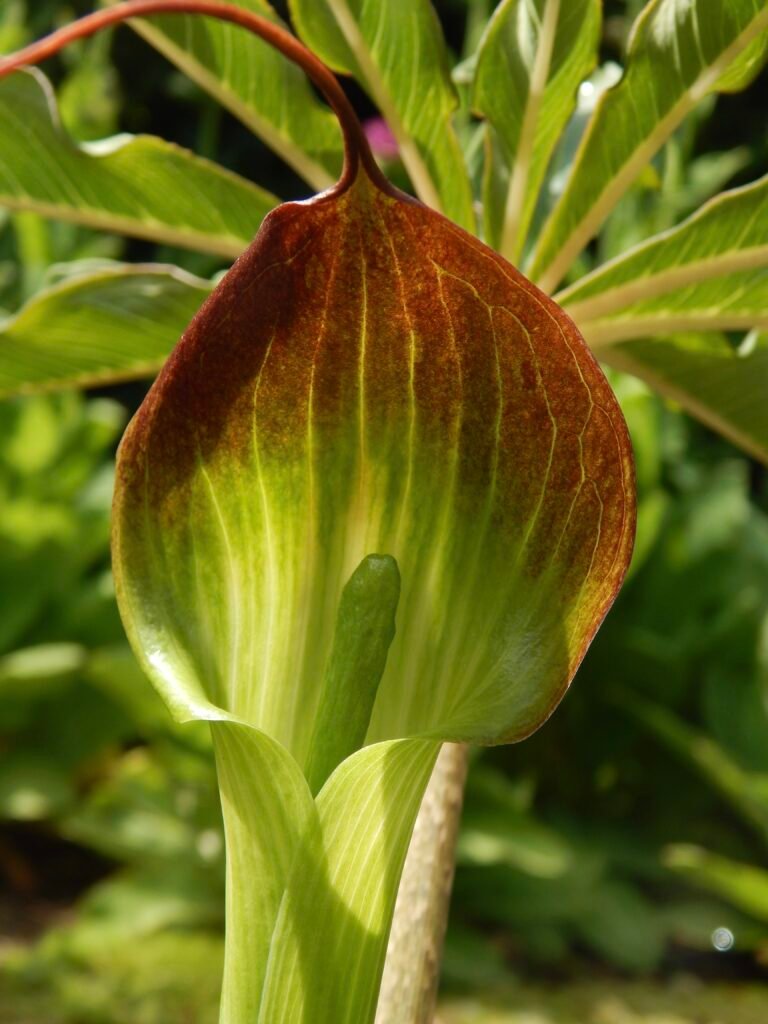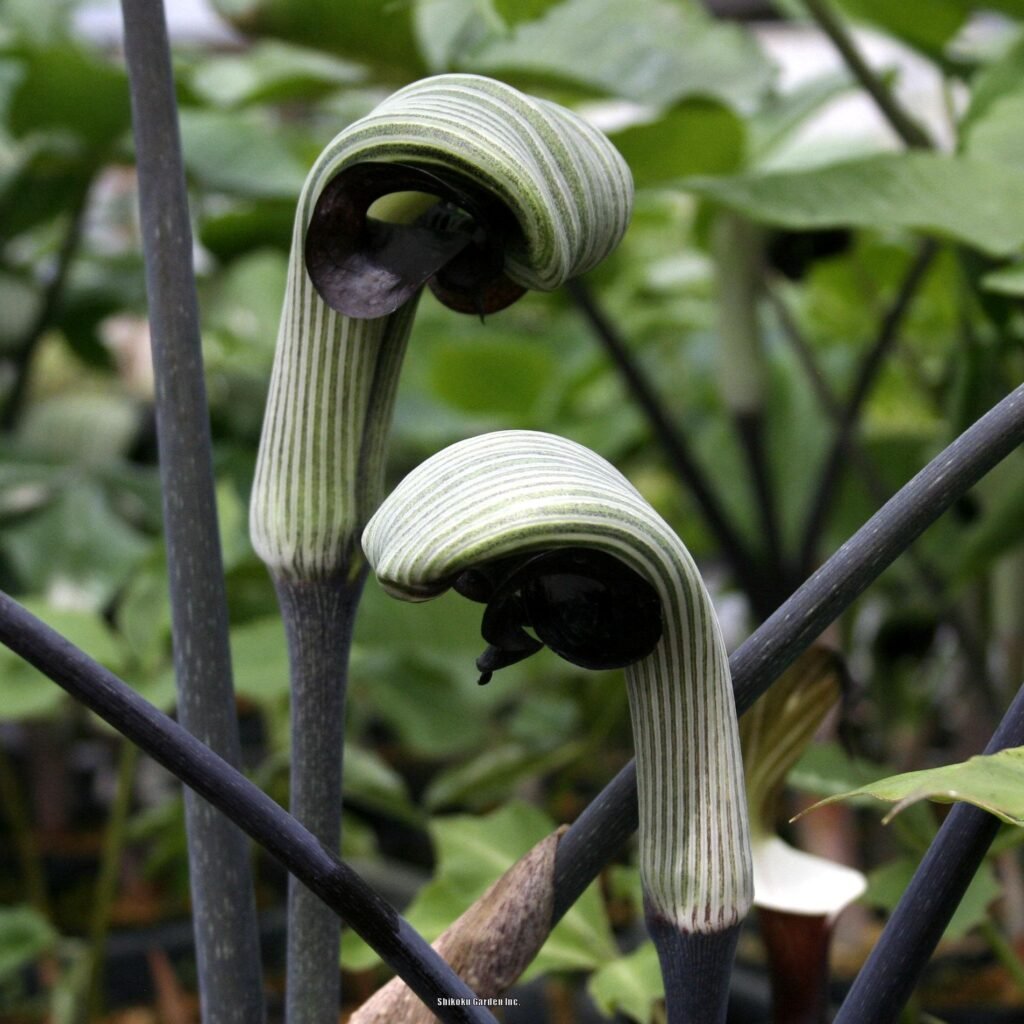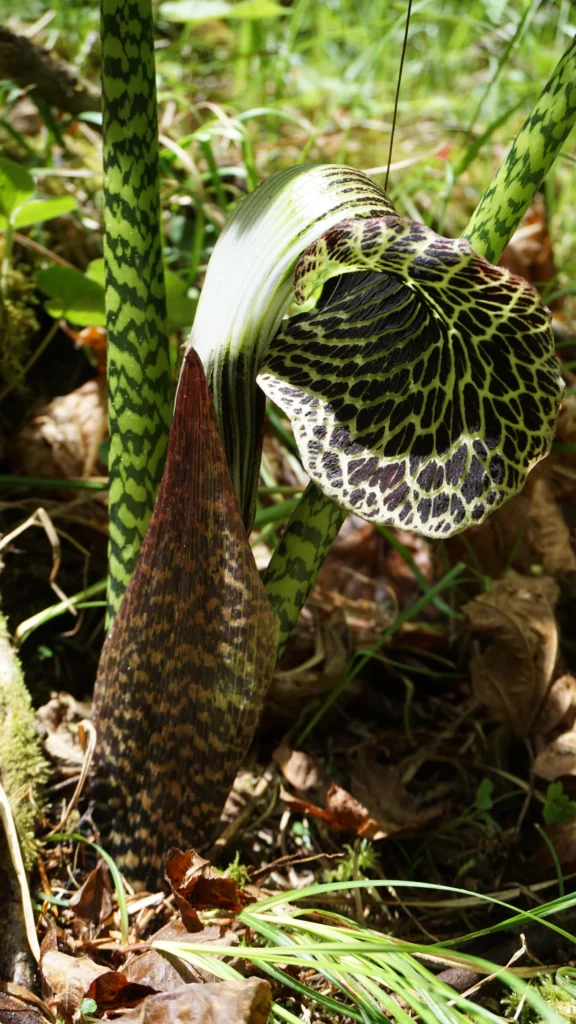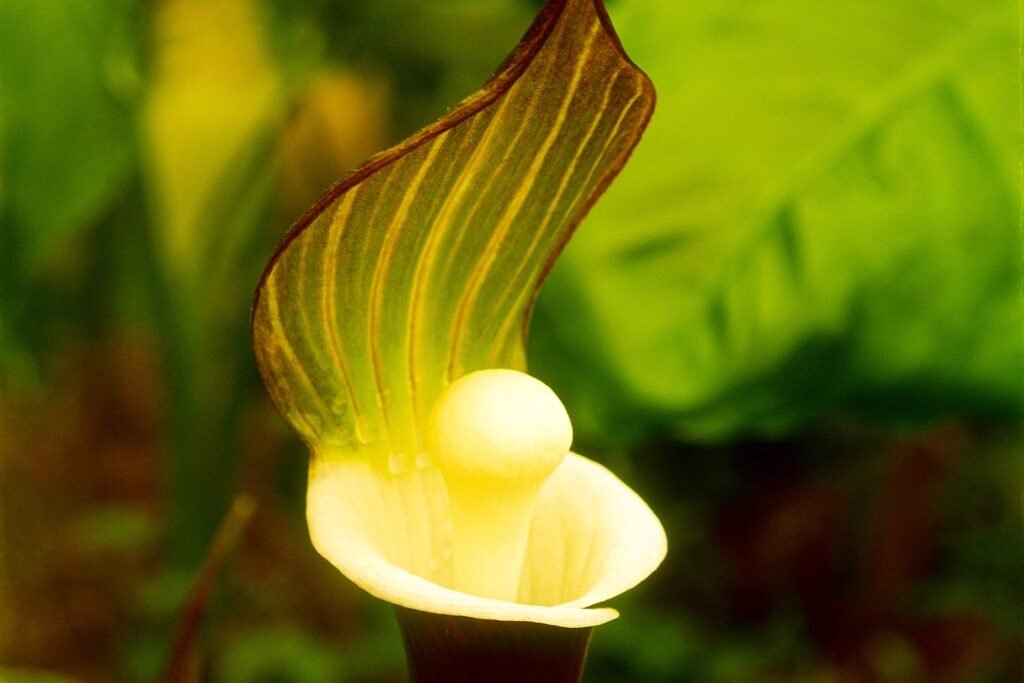Arisaemas: Mystery and Theatre in the Shade Garden

There’s a certain kind of plant that doesn’t announce itself loudly. It doesn’t blaze with colour or cover itself in blooms. Instead, it leans in and whispers—inviting you to look a little closer.
That’s what Arisaemas do.
I remember the first time I spotted one. It was in a quiet garden at the edge of a wood, growing beneath a canopy of spring-flushed maples. The soil was damp, the air still cool from winter’s retreat. And there, among emerging ferns and last year’s leaf mould, stood this strange, upright figure—hooded, striped, and somehow full of quiet presence. It didn’t just grow—it performed.
Arisaemas—commonly known as Jack-in-the-pulpit or cobra lilies—are among the most intriguing residents of a shade garden. There’s something almost animal-like about them, from their hooded flowers to their poised, almost reptilian stance. Some gardeners say they’re alien. Others say they’re elegant. I’d say they’re a little of both.
The Quiet Drama of a Woodland Performer

Unlike many plants we use to brighten up the shade, Arisaemas aren’t in a rush. They emerge when they’re ready, often later in spring, sending up one or two curious structures—a thick stem, a tripartite leaf, and that unmistakable spathe and spadix combo. In Arisaema triphyllum, native to much of eastern North America, the flower can be green or purple-striped, while Arisaema sikokianum from Japan sports a ghostly white club inside a dark maroon hood, like a candle in a lantern.
Each variety has its own twist. Some send up single leaves that resemble miniature umbrellas. Others unfold a fan of leaflets with almost prehistoric flair. The overall effect is always… intriguing.
And it’s that sense of theatre that makes Arisaemas so special. They don’t fill space or smother ground. They punctuate it. Like pauses in a story. Or characters in a shadowy scene.
Growing Arisaemas: What They Like

These are plants that enjoy life on the woodland floor. Moist, humus-rich soil, consistent shade or dappled light, and cool roots are their ideal. They’re surprisingly hardy—most species grow happily in USDA Zones 5 through 8 or 9—but they don’t like sudden extremes.
In my own garden and the ones I care for, I tend to tuck them near the base of deciduous shrubs where early spring sun reaches the soil but summer shade offers shelter. Mulching helps regulate moisture and temperature. They don’t need a lot of feeding, just good leaf mould or compost to keep the soil rich.
But here’s the important bit: Arisaemas take their time. They might sulk for a year. They might vanish in drought. They might pop up somewhere new. It’s not failure—it’s just how they grow. A different rhythm. A slower beat.
Why Grow Them?

We often think of shade gardens as soft, soothing places. A calm foil to the loudness of full-sun beds. Arisaemas shift that story. They add tension. A flicker of drama. A sense of discovery.
They’re not plants to fill every border, but they are plants to pause beside. To return to. And if you like your garden with a bit of poetry and surprise, they might just be your next favourite thing.
Looking for More?
If Arisaemas have sparked your curiosity, there’s plenty more to explore. Over in The Garden Notebook, you’ll find stories, seasonal advice, and reflections rooted in real gardens—just like yours.
Haven’t listened to The Shade Gardening Podcast yet? It’s a gentle blend of shade-loving plant profiles, design ideas, and stories from gardeners around the world.
And if you’re looking for community:
– Join over 300,000 members in our Shade Gardening Facebook Group, where questions are welcome and shady successes are celebrated.
– Or step into the wider gardening rhythm with us at Gardening with Marcus—a space for stories, seasonal tips, and that quiet joy of watching things grow.
Everything I do—from podcasts and writing to garden tours and behind-the-scenes thoughts—is now gathered here on MarcusBergin.com. One place, rooted in real gardens and shared curiosity.
